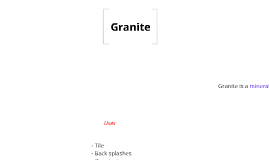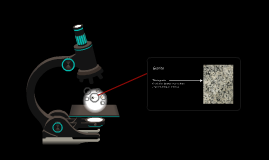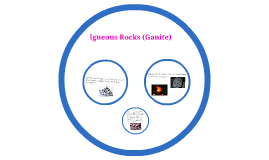granite
Transcript: One of the most widely known rock in the world The term "granite" is derived from Latin word "granum" which means grain. Popular material for monuments Used in landscaping, road base, sculpting, monuments, counter-tops, wall tiles, etc. It is very abundant rock, so there is no need for any conservation strategies Granite: Where is it located? Granite is found and identified through core sampling, and it is mostly mined through drilling with explosives. The drilling pattern and the explosion used to determine the shape. Through modern technology, today, we can control the drilling pattern to break the rock into slabs in shapes we desire. Alternative method: Filling the drilled hole with water and let it freeze. As the water freezes, it expands, eventually breaking the rock into pieces. Formation Type: Igneous, Class: Intrusive Comes with many different colors (White, pink, orange, gray, black) One of the hardest material along with diamond. Lacks reactivity, they are resistant to acids and other harmful chemicals. Very durable: "Heat resistant, weather resistant and chemical resistant" Granite Not much have economic impacts of granite have changed from past to present, as granite is still important to the industry involving constructions. In United States, granite is one of the most utilized crushed stone in private industry as well as for the government (such as department of transportation), for the construction of the roads, national monuments, and railroad beds. Demands for granite has only been rising. The granite has a large concentration in many places in the world. In United States, New Hampshire (State of Granite) and Vermont (Granite capital of the world) produce large amount of granite. One of their deposits are nearly 35 miles long, 6 miles wide and 3 miles deep. Granite is also quarried in many other countries such as Canada, Finland, Norway, Brazil, India, Spain, South Africa and much more. Introduction Mining and Socioeconomic impacts How is Granite formed, and where is it located? Impact on Environment Water pollution: improper disposal of mining wastes. Decline in fish population. Silicosis and tuberculosis between mine workers. Hard material to recycle. The use of granite and the environmental impact of granite quarries has not been a subject of heated debate 3A - JunYoung Kim Granite mining site at Vermont Mainly 4 minerals: Quartz(20 to 60 %), Feldspar, Mica and Hornblende Socioeconomic Impacts Citations Primary (printed documents) 1. Costello, J. and W. G. Graham. 1988. “Vermont Granite Workers’ Mortality Study.” American Journal of Industrial Medicine 13(4): 483-497. Accessed Nov 28 2012 2. Graham, W. G., J. Costello, and P. M. Vacek. 2004. “Vermont Granite Mortality Study: An Update with an Emphasis on Lung Cancer.” Journal of Occupational and Environmental Medicine 46(5): 459-466. Accessed Nov 29 2012 Secondary (printed documents) 1. Quillin, M. (1994, Aug 20). Mining company threatens popular state park; granite company owns wolf rock mineral rights.News & Observer, pp. 1-1. Retrieved from http://search.proquest.com/docview/402541089?accountid=9603 2. Eloise, r. H. (2001, Nov 01). Granite: A rock solid business. Vermont Business Magazine, 29(13), 56-56. Retrieved from http://search.proquest.com/docview/200600731?accountid=9603 Tertiary (printed documents) 1. New Hampshire. (2012). In Compton's by Britannica. Retrieved from http://school.eb.com/all/comptons/article-205437 2. Henri Russel (October 1, 2001). Encyclopedia of Rocks, Minerals, and Gemstones Retrieved from http://www.amazon.com/Encyclopedia-Rocks-Minerals-Gemstones-Russell/dp/1571455620 in December 1. Websites 1. lee, S. H., Ph.D. (n.d.). Granite. Retrieved December 1, 2012, from Vermont Mining website: http://www.uvm.edu/~envprog/formslinks/Vermont%20Mining//Granite.html 2. King, H. (n.d.). Granite. Retrieved November 30, 2012, from http://geology.com/ rocks/granite.shtml 3. Powell, D. (2012). Mineral photos - granite. Retrieved December 1, 2012, from http://www.mii.org/Minerals/photogranite.html Characteristics Details Mining As magma is pushed up towards the surface of the earth, it cools and crystallizes beneath the Earth's surface. The entire process take so long (may take millions of years) that the newest granite found on earth is believed to be nearly 750 million years old

















